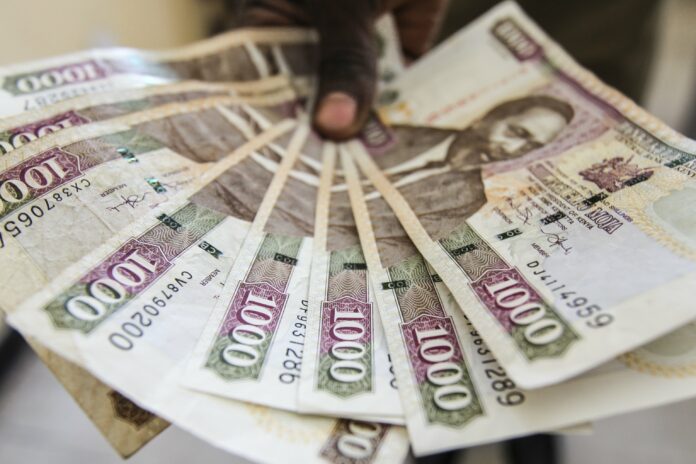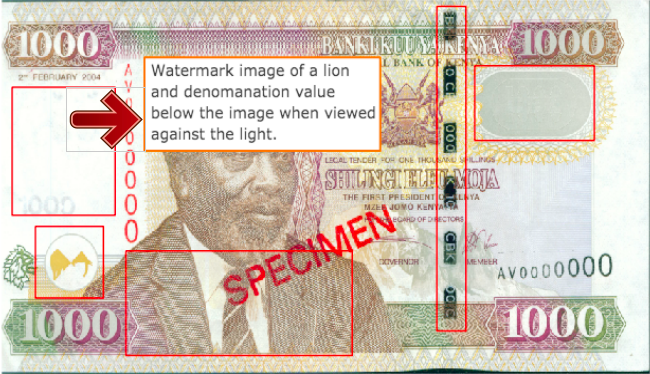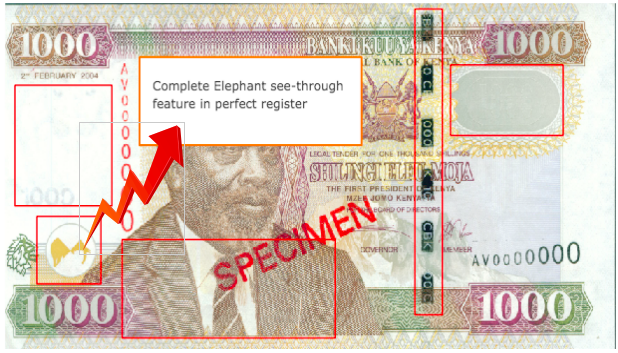Fake Kenyan Note: There are fake currency notes worth millions of shillings in circulation in Kenya. Recently, two men were arrested with up to Sh. 1 billion fake money in Nairobi. It is therefore important to know how to identify them. Central Bank of Kenya has issued a list of some features that will assist you determine if a Kenyan banknote is fake or not.
A video of fake currency printing machine went viral in May 2016 showing just how it was easy to have the fake notes.
The currency notes have some features that easily help you know if a note is fake or not. The Public features include: watermarks, note size, security thread, serial numbers, and the texture of specific parts of the note.
1. Portrait Watermark
A three dimensional portrait of a lion’s head can be seen when the note is held up to the light. The watermark has a three dimensional appearance with areas in varying tones of dark and light. Below the watermark is the value numeral of the banknote i.e 1000, 100 etc. This number can be seen when the note is held up to the light. Both the portrait and value numeral depict some brightness when held up to the light. see illustration above.
2. Serial Numbers
The serial numbering style is asymmetrical and has progressively larger digits in adjacent positions. One set of serial numbers appears horizontally, the other vertically. The vertical serial numbers on the left hand side of the banknote glows under UV light
3. See Through Feature
Each of the banknotes has a see through feature which forms a perfect complete elephant when held up to the light. When looked at from one side, the image does not form any recognizable feature unless when looked at up to the light.
4. Kenyatta’s Rough Coat
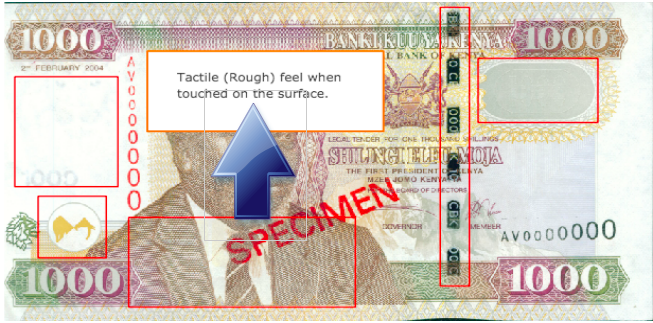 When you touch the collars of Mzee Kenyatta’s coat re the Ksh 1000 note, the feeling should be very rough as illustrated above.
When you touch the collars of Mzee Kenyatta’s coat re the Ksh 1000 note, the feeling should be very rough as illustrated above.
5. Security Thread
All genuine banknotes have a distinct interwoven thread running vertically down the right hand side of the notes. When held up to the light, the thread appears as a continuous line and it shows a series of text featuring the denomination numeral of the note and the letters CBK. The current generation of banknotes features two types of threads:-
For the 1000 and 500 shillings denominations, the thread is thicker and portrays a colour shift when viewed at angles.
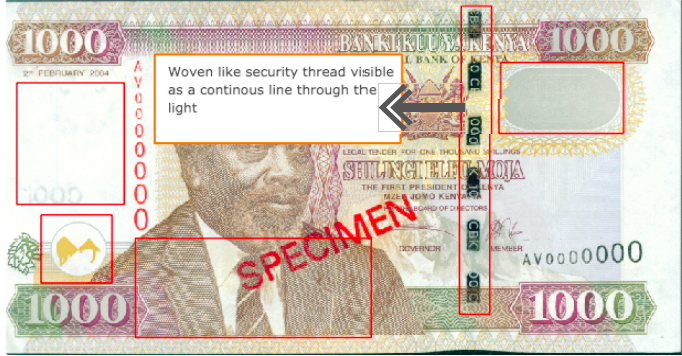
– On other hand, the 50, 100 and 200 shilling denominations have a thinner thread silver in colour and do not depict any colour shifts when viewed at angles.
6. Size
All the denominations have different sizes. The KSh 50 note is the smallest while KSh 1,000 note is the biggest.
Fun fact; According to the Central Bank of Kenya, an individual can replace old, damaged or contaminated notes for free provided there are sufficient fragments or remains.




